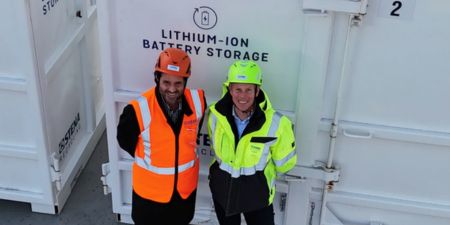
The CREATE International faculty delegations next site visit was with Jon Emil Furuseth, Head of Stena Recycling’s Battery Group. Stena is a leader in industrial recycling, now tackling electric vehicle (EV) battery reclamation, second-life reuse, and recycling. With 20,000 employees and 16 operations in Norway, Stena processes 6 million tons of waste annually, including batteries from recalls, accidents, and end-of-life vehicles. Their zero-waste facility, emphasizes human precision in battery diagnosis and sorting, achieving superior accuracy when compared to machines.
Stena’s focus on reuse aligns with their “inverse triangle” model, prioritizing waste reduction, reuse, and materials recycling over disposal. Batteries currently hold a negative value (about -$500 each due to disposal costs), but refurbishing them could unlock substantial profits. Stena’s partnership with Nissan, a major EV producer since 2011, underscores their strategic role in the EV battery value chain, from manufacturing to end-of-life. This collaboration generated over $3 million in value, boosting Stena’s global visibility.
A key challenge is the lack of certification standards for reclaimed batteries, which discourages insurance companies and manufacturers from endorsing refurbished units. For example, a one-year-old Mercedes recently sustained some undercarriage road debris impact, resulting in minor damage to the battery enclosure. This led to the complete removal and replacement of the entire battery bank at a cost of $37,000 . By comparison, inspection and repair of the enclosure housing, and replacement of individual battery cells, could have provided similar benefits at only a small fraction of the cost. This highlights the need for more cost-effective EV repair solutions.
In Norway, there are many early model EVs from 2011-2015 that now comprise an older part of the Norwegian vehicle fleet. This creates a potential surplus of salvaged and reclaimed batteries as these cars approach the end of their road life. Stena is exploring ways to reclaim, recertify, and redeploy these batteries which retain significant value.
Used lithium-ion batteries recovered from the automotive sector are well suited for less demanding secondary applications like stationary Battery Energy Storage Systems (BESS). These systems help Stena respond to Norway’s variable electricity rates and manage peak energy costs. Norwegian electricity prices fluctuate with demand from the European Union, and can exceed €0.29/kWh ($0.33/kWh) at peak times, creating a financial opportunity for smart battery storage and dispatch, using low cost reclaimed second life batteries.
The visit revealed a critical gap in the U.S., where second-life battery markets lag due to certification and training deficits. Stena’s efforts in Norway leverage high EV adoption to lead this emerging industry, offering a model for sustainable battery lifecycle management worldwide.
The CREATE faculty delegation recognized several critical components that could be implemented into curriculum to support EV and battery storage curriculum to strengthen the skill set of the U.S. technical workforce.
Tomorrow the CREATE faculty delegation will participate in Day 1 of the Nordic EV Summit.
Sign up for the CREATE Newsletter and stay updated on the latest information in Renewable Energy Education.
Copyright @ 2025 CREATE National Energy Center
This material is based upon work supported by the National Science Foundation under Grant #2201631. Any opinions, findings, and conclusions or recommendations expressed in this material are those of the author(s) and do not necessarily reflect the views of the National ScienceFoundation.